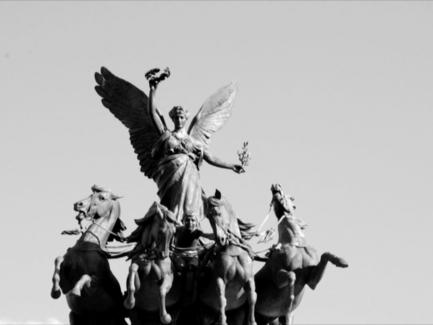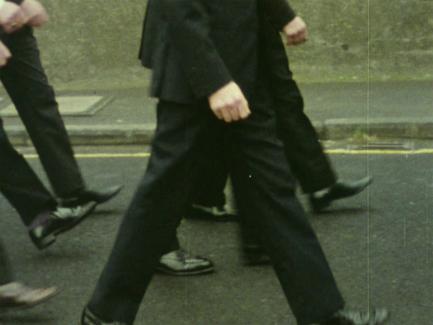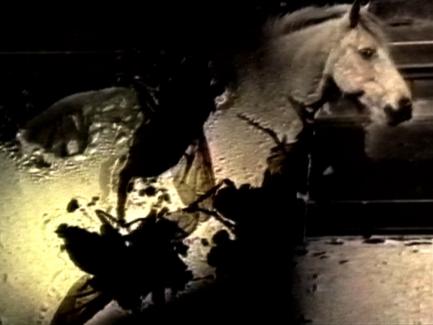The Forest
Ori Gersht (2005; 13 mins., 23 secs.)
Trees fall in an unnamed forest in slow succession. The camera follows the trees as they hit the ground, but the film does not reveal how or why the trees are falling. An initial human cry is heard but not seen before the first tree falls. As the sun filters through the canopy of leaves, residual leaves and dust float into the sky as the trees come down. Sound plays a dominant role in The Forest—the sound of a tree falling is at times amplified and ripples outwards, while at other times it is muted, and the tree falls in silence. This discordant rhythm is pivotal to the disruptive force of this otherwise tranquil scene of nature. The repetition of one tree falling after another produces a physical and visceral feeling of destruction and loss. Each fallen tree marks a unique event that is displaced by the continual felling, yet, in the end, the forest still stands.
The Forest was filmed in Kosov, Ukraine, the birthplace of Gersht’s father-in-law and where he attempted to seek refuge from Nazi persecution. Unknown numbers of Jews were massacred and buried in the forest of Moskalov in Kosov. Although Gersht does not invoke the event directly, the site of the forest is deeply and symbolically implicated in, and witness to, this atrocity.
About Ori Gersht
Ori Gersht (born 1967) is an Israeli-born artist whose practice spans several different genres and techniques through photography, film, and video. His work explores themes of history, landscape, and memory and their relationship to each other. Among his recurrent interests is how historic trauma becomes embedded into a landscape long after the event. Traveling to photograph sites in Auschwitz, Bosnia, and Hiroshima, Gersht’s work often moves between beauty and brutality by exploring how violent histories are inscribed metaphorically into their environments over time. A key element of Gersht’s practice is challenging the viewer’s perception through pushing the limits of his medium using techniques such as slow-motion capture. Gersht has had solo exhibitions at Tate Britain; the Hirshhorn Museum and Sculpture Garden; the Museum of Fine Arts, Boston; the Tel Aviv Museum of Art; and the Jewish Museum, New York. His work is included in numerous collections around the world, including the Museum of Modern Art, San Francisco; the Solomon R. Guggenheim Museum, New York; the Los Angeles County Museum of Art; the J. Paul Getty Museum; the Victoria and Albert Museum; and the Yale Center for British Art. The artist currently lives and works in London.
Written by Merritt Barnwell (SY 2022)


